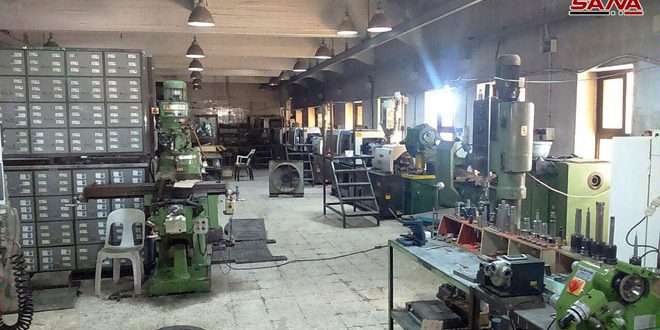The Syrian Government has taken special measures to encourage and support the industrial sector, helping 847 projects and new industrial and artisan facilities throughout the past year with a capital estimated at 30.383 billion Syrian pounds and creating 3,766 job opportunities.
A report by the Industrial Investment Directorate at the Ministry of Industry showed that in 2018, the food sector was on top with regards to the number of facilities and projects with 373 facilities and it was followed by the chemical sector with 218 facilities, the engineering sector with 194 facilities and the textiles sector with 62 facilities.
The report added that with regards to the number of facilities in the provinces, the coastal province of Tartous came first with 171 facilities, followed by Hama with 170 facilities, the Damascus Countryside with 127, Aleppo with 110, Homs with 82, Suweida with 72, Lattakia with 55, Daraa with 53 and just seven facilities in Damascus.
According to the report, the number of industrial facilities that were established, according to the industrial regulatory law No. 21, was recorded at 530, with a capital of 23.133 billion pounds, creating 3,434 job opportunities distributed among 210 food facilities, 171 chemical facilities, 105 engineering facilities and 44 textile facilities.
The report added that the number of implemented projects according to the laws that encourage investments reached eight projects with a capital estimated at 2.273 billion pounds, distributed between the food and the engineering sectors.
Meanwhile, the number of the artisan facilities that were established in 2018 according to the legislative decree no. 47 reached 309, with a capital estimated at 2.2 billion pounds and provided 778 job opportunities.
Regarding the licensed facilities, the report revealed that 1,950 facilities and projects were licensed with a capital of 120.136 billion pounds, adding that they will provide 20,894 job opportunities when production begins.
The Damascus Countryside province came first with regards to the number of the licensed facilities with 623, and Aleppo came third with 542 facilities, followed by Homs with 192 facilities, Damascus 129 facilities, Hama 105 facilities, Tartous 93, Daraa 58 facilities, Lattakia 57, Suweida 31, Quneitra 25 and Deir ez-Zor 25 facilities.
According to the report, 1,919 facilities were licensed according to the law no. 21, with a capital estimated at 124.158 billion Syrian pounds and they provided 18,118 job opportunities.
The report noted that the aforementioned numbers wouldn’t have been achieved without the huge turnout by investors who made investments in the industrial sector and without many of the legislations and laws that encourage industrialists to increase their production.
This article was edited by The Syrian Observer. Responsibility for the information and views set out in this article lies entirely with the author.


